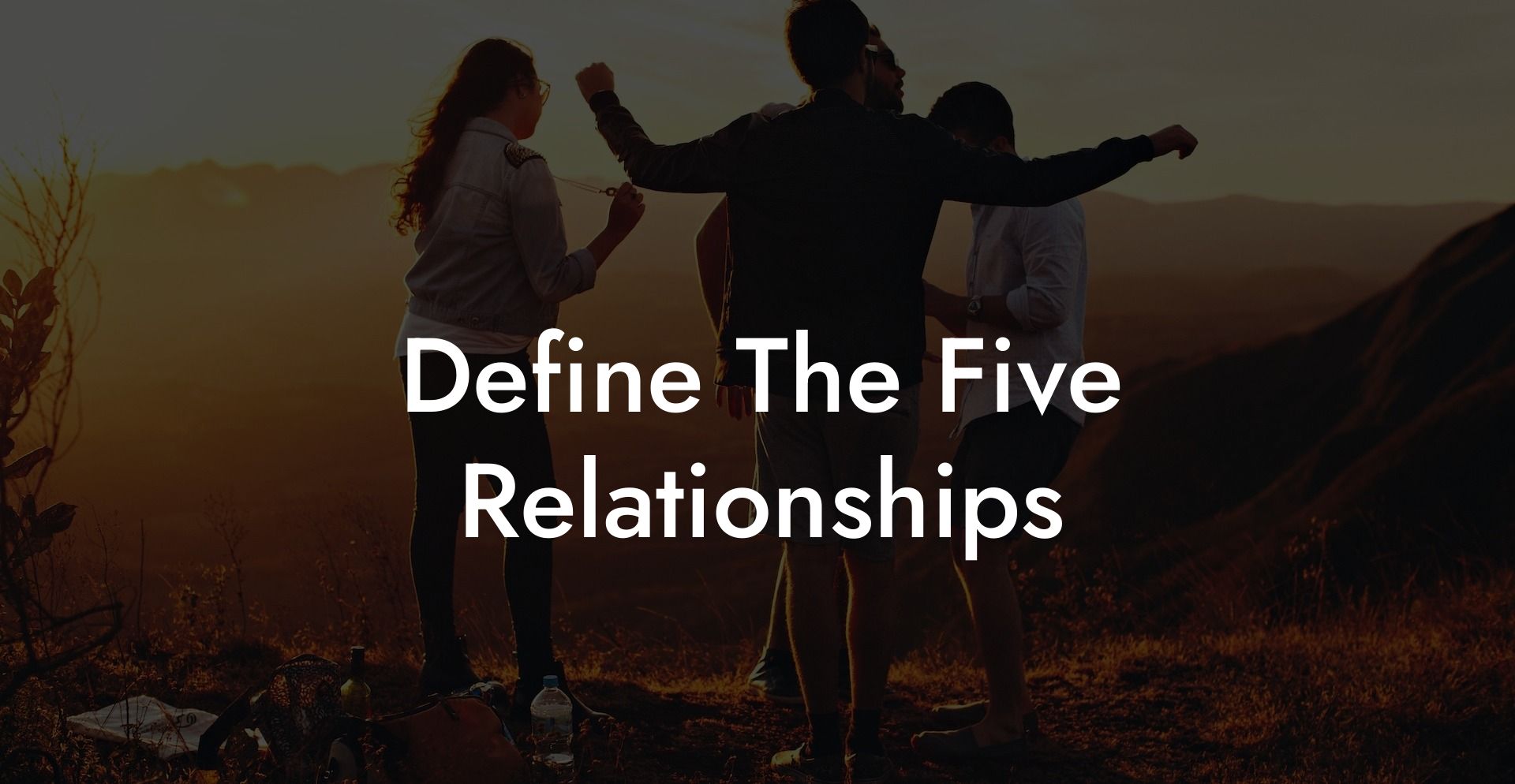Every person has a unique perspective on what relationships should look like. Monogamous, polyamorous, or somewhere in between, there's plenty of room for exploration and variation. But, do you know about the five different relationship types that you might encounter? In this guide, we will dive into each relationship category, offering you a comprehensive understanding of the various dynamics found in the world of both monogamous and non-monogamous relationships.
Define The Five Relationships Table of Contents
The Monogamous Relationship
In the simplest terms, a monogamous relationship involves two people who are dedicated to each other, sexually and emotionally, with a mutual expectation of exclusivity. This is still the most common relationship type in society. Some of the benefits of monogamous relationships can include financial stability, emotional safety, and legal recognition.
Key Characteristics of Monogamous Relationships:
- Emotional and sexual exclusivity
- Socially accepted and legally recognized (e.g., marriage)
- Clear boundaries and expectations
The Open Relationship
An open relationship, also known as a non-monogamous relationship, is a partnership where both partners consent to have other sexual relationships outside their primary partnership. This type of arrangement maintains emotional exclusivity between the primary couple, but they each accept that sexual encounters with others are acceptable.
Key Characteristics of Open Relationships:
- Emotional exclusivity, with sexual non-exclusivity
- Communication and honesty are vital
- Ground rules and boundaries need to be negotiated and respected
The Polyamorous Relationship
Polyamory is a relationship model that allows for multiple romantic and sexual connections with the consent and knowledge of everyone involved. Unlike open relationships, polyamorous relationships are not just about sexual freedom but rather focus on building deep emotional connections with multiple partners.
Key Characteristics of Polyamorous Relationships:
- Emotional and sexual non-exclusivity
- Different structures, such as triads, quads, and networks of partners
- Consent, communication, and mutual respect are cornerstone values
The Swinging Relationship
Swinging is a form of non-monogamous relationship that involves a couple engaging in recreational sexual activities with other people. It is typically organized through events, clubs, or online communities like swingers’ websites. Swinging often focuses on sexual experiences rather than building emotional connections with other partners.
Key Characteristics of Swinging Relationships:
- Sexual non-exclusivity, shared as a couple
- Emphasis on recreational, and often temporary, encounters
- Can be integrated into different types of relationships
The Relationship Anarchist
Relationship Anarchy is a philosophy that challenges traditional societal norms and expectations regarding love and relationships. Relationship Anarchists believe that people should be free to engage in the relationships they choose, without societal constraints or limitations. They often prioritize autonomy and personal fulfillment over the traditional relationship structure.
Key Characteristics of Relationship Anarchy:
- No distinction between friendships and romantic relationships
- No expectation of exclusivity or formal commitments
- Independence and personal growth are highly valued
Define The Five Relationships Example:
Imagine you're in a monogamous relationship with your partner, and you discover that both of you are interested in exploring non-monogamy. You could transition to an open relationship, where you remain emotionally exclusive with each other, but both partners are free to explore their sexual desires with others. If emotional connections with other partners appeal to you, polyamory may be a more suitable option. Alternatively, if you want to share the experience of non-monogamy together, you may consider entering the swinging community.
In the world of relationships, there are many options to explore and no one-size-fits-all solution. As you navigate your own journey, it's essential to communicate openly and honestly with your partner(s) and choose the relationship model that works best for everyone involved. Remember that relationships can evolve, and finding the perfect dynamic may take some time. If you've enjoyed exploring the five relationships with us, please share this guide and dive into our other articles on The Monogamy Experiment for more insights and discussions on relationships, monogamy, and non-monogamy!













